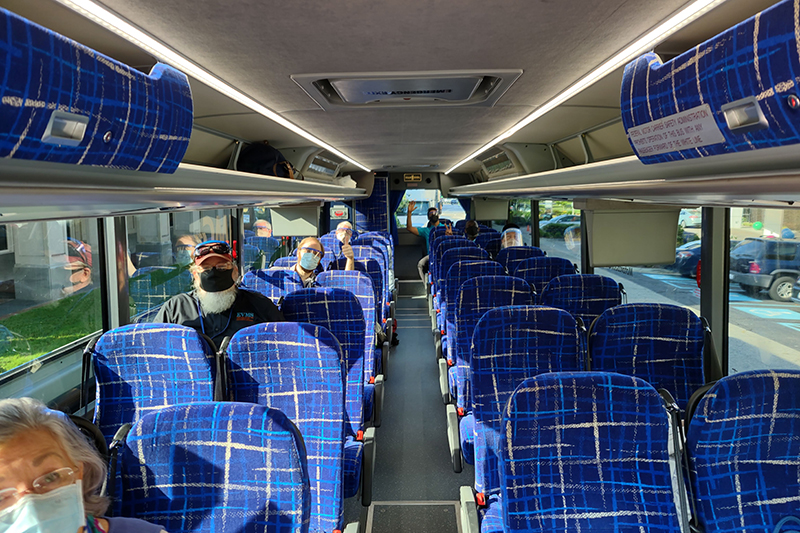Social distancing allows standardized patients to continue training

EVMS Standardized Patients who have been working virtually since the start of the pandemic are back in action on campus and at other medical and health professions institutions across the country. A team of six Male Urological Teaching Associates (MUTA) and one administrative staff member from the Sentara Center for Simulation and Immersive Learning (SCSIL) at EVMS traveled to Duke Medical Center in a bus for a recent training opportunity to ensure proper social distancing.
MUTAs utilize their own bodies to demonstrate how to properly conduct these sensitive exams, while also guiding learners through the proper performance of the exams.
“Our genitourinary learning experiences are critical to the education of healthcare learners and not just at EVMS, but at over 80 medical, health professions, and nursing schools up and down the East Coast,” says Bob Armstrong, Executive Director of the EVMS Sentara Center for Simulation and Immersive Learning.
While there are many standardized patient programs, Mr. Armstrong says it is much more challenging to create and maintain a genitourinary teaching program, largely because the skills degrade without repetition. “Because our program serves so many clients, the skills of our Gynecological Teaching Associates and MUTAs do not degrade; in fact, they are refined due to the sheer volume of encounters they lead.”
Adding to the strength of the program, Mr. Armstrong says there are no artificial simulations that adequately capture male and female genitourinary anatomy and physiology.
“The guidance and feedback our GTAs and MUTAs provide is essential to instilling knowledge — and relative comfort and familiarity — regarding proper procedures.” That includes verbal and physical interactions between the learner and the patient, Mr. Armstrong adds.
The group visiting Duke Medical Center was the biggest to travel since the pandemic began. Mr. Armstrong hopes the trips can continue to other institutions with proper PPE and social distancing in place.